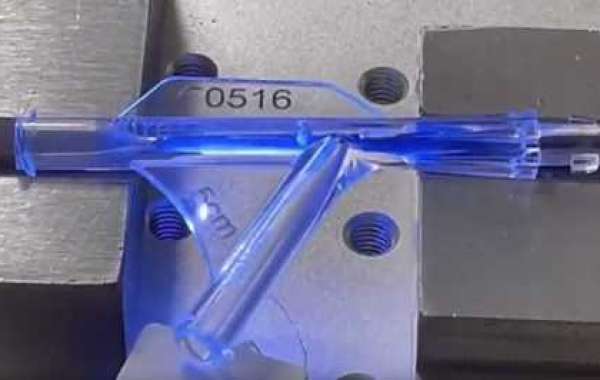What is EDM?
EDM, short for Electrical Discharge Machining, is a revolutionary precision machining process that has transformed the manufacturing industry. Unlike traditional cutting methods that rely on physical contact between the tool and the workpiece, EDM utilizes electrical sparks to erode material and create intricate shapes with unparalleled accuracy.
So how does it work? Well, EDM involves passing an electrical current through a small gap between an electrode (usually made of copper or graphite) and the workpiece. This creates a series of rapid electrical discharges or sparks that vaporize tiny particles from the workpiece, gradually shaping it into desired forms.
The beauty of EDM lies in its ability to cut through even the toughest materials without causing any mechanical stress or distortion. It can effortlessly slice through hardened steel, exotic alloys, titanium - you name it! This makes EDM ideal for creating complex molds, dies, prototype parts with tight tolerances, and even delicate medical components.
Moreover, EDM offers exceptional precision levels down to microns. That means you can achieve intricate details and precise measurements that would be nearly impossible using conventional machining methods alone.
Intriguingly enough, this remarkable technology was discovered by accident in the late 1940s when Soviet scientists observed erosion caused by electric sparks during experiments. Since then, EDM has evolved into various techniques such as wire-cutting (WEDM), die sinking (Sinker EDM), hole drilling (Hole Popper), and more.
By harnessing electricity's power rather than brute force from tools or blades,
EDM paves the way for limitless possibilities in manufacturing intricate components with unparalleled precision – all thanks to its ingenious use of electrical discharge!
What is Brass Wire?
Brass wire is a versatile and widely used material in various industries. It is made by combining copper and zinc, resulting in a strong and durable alloy that can be easily manipulated into different shapes and sizes.
One of the key characteristics of brass wire is its excellent conductivity, which makes it ideal for electrical applications. It is commonly used in wiring systems where high performance and reliability are required.
In addition to its electrical properties, brass wire also offers good corrosion resistance. This makes it suitable for outdoor or marine applications where exposure to moisture or harsh environments may occur.
Brass wire comes in various forms, including round, flat, square, hexagonal, and more. Its versatility allows it to be used in a wide range of applications such as jewelry making, musical instruments manufacturing, plumbing fixtures production, and even decorative purposes.
Brass wire offers a combination of strength, conductivity, corrosion resistance, and versatility that makes it an excellent choice for many industries. Whether you need it for electrical wiring or artistic projects – brass wire has got you covered!
The Different Types of EDM Brass Wire
When it comes to EDM (Electrical Discharge Machining), brass wire is one of the most commonly used materials. But did you know that there are different types of brass wire available for this purpose? Let's take a look at some of them:
1. Hard Brass Wire: This type of brass wire is known for its high tensile strength and rigidity. It is ideal for applications where precision and stability are crucial, such as cutting intricate shapes or patterns.
2. Soft Brass Wire: On the other hand, soft brass wire offers greater flexibility and bendability. It is often preferred when working with delicate materials or complex contours that require more maneuverability.
3. Coated Brass Wire: To enhance performance and prolong its lifespan, some brass wires are coated with special coatings like zinc or nickel alloys. These coatings provide additional protection against wear, corrosion, and oxidation.
4. High-Speed Brass Wire: As the name suggests, this type of brass wire is designed to cope with higher machining speeds without compromising accuracy or surface finish quality.
5. Low-Voltage Brass Wire: For specific applications requiring lower discharge energy levels, low-voltage brass wire can be employed to achieve precise results while minimizing material damage.
Choosing the right type of EDM brass wire depends on several factors including your project requirements, desired results, and budget constraints. Consulting with an experienced EDM professional can help ensure you make an informed decision based on your specific needs.
Remember that using the correct type of EDM brass wire not only improves cutting efficiency but also enhances overall machine performance while reducing operating costs in the long run! So make sure to select wisely!
Understanding the different types of EDM brass wires available allows you to choose the most suitable option for your specific application needs in terms of strength, flexibility, coating preferences, speed requirements,and voltage considerations.+
EDM Brass Wire https://www.brasswireedm.com/EDM-Brass-Wire














